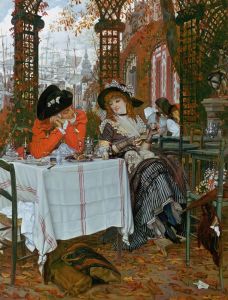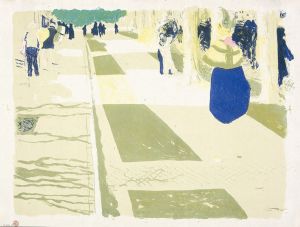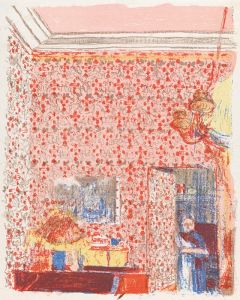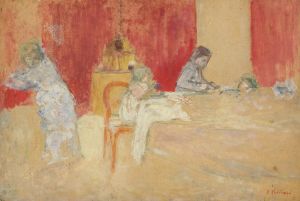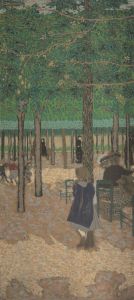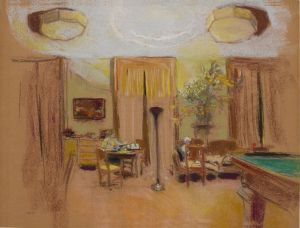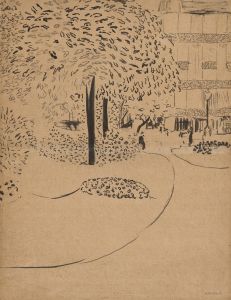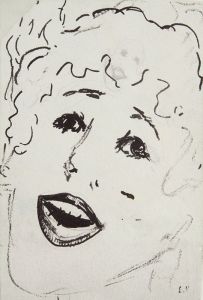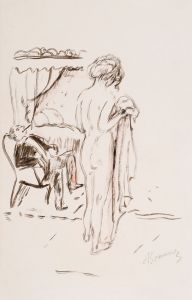
La Saucière Et Les Ronds De Serviette
A hand-painted replica of Édouard Vuillard’s masterpiece La Saucière Et Les Ronds De Serviette, meticulously crafted by professional artists to capture the true essence of the original. Each piece is created with museum-quality canvas and rare mineral pigments, carefully painted by experienced artists with delicate brushstrokes and rich, layered colors to perfectly recreate the texture of the original artwork. Unlike machine-printed reproductions, this hand-painted version brings the painting to life, infused with the artist’s emotions and skill in every stroke. Whether for personal collection or home decoration, it instantly elevates the artistic atmosphere of any space.
Édouard Vuillard, a prominent French painter associated with the Nabi movement, created the painting "La Saucière Et Les Ronds De Serviette" in the late 19th or early 20th century. Vuillard is renowned for his intimate domestic interiors and his ability to capture the subtleties of everyday life with a unique blend of impressionistic and post-impressionistic techniques.
Vuillard was born on November 11, 1868, in Cuiseaux, France, and he spent much of his life in Paris. He studied at the Académie Julian and later at the École des Beaux-Arts, where he met other artists who would become part of the Nabis, a group that sought to break away from the traditional academic art of the time. The Nabis were influenced by Paul Gauguin and were known for their use of bold colors, decorative patterns, and a focus on capturing the spiritual and emotional aspects of their subjects.
"La Saucière Et Les Ronds De Serviette" exemplifies Vuillard's style during his Nabi period. The painting likely depicts a domestic scene, a common theme in Vuillard's work, where he often portrayed the interiors of homes, capturing the essence of bourgeois life. Vuillard had a particular interest in the interplay of light and shadow within enclosed spaces, and he frequently used a muted color palette to convey a sense of intimacy and warmth.
Vuillard's technique involved the use of small, delicate brushstrokes and a careful attention to detail, which allowed him to create richly textured surfaces. He often incorporated patterns into his compositions, drawing inspiration from textiles and wallpapers, which were prevalent in the interiors he depicted. This attention to pattern and texture is evident in "La Saucière Et Les Ronds De Serviette," where the objects in the scene are likely rendered with a focus on their material qualities and the way they interact with the surrounding space.
The title of the painting, which translates to "The Sauceboat and the Napkin Rings," suggests a focus on the objects themselves, which may be arranged on a dining table or within a domestic setting. Vuillard's work often blurs the line between still life and interior scenes, as he imbues everyday objects with a sense of presence and significance. This approach reflects the influence of Japanese prints, which Vuillard admired for their compositional balance and emphasis on the beauty of the mundane.
Vuillard's paintings are characterized by their introspective quality and their ability to evoke a sense of nostalgia. He was known for his ability to capture the quiet moments of life, and his work often conveys a sense of tranquility and contemplation. "La Saucière Et Les Ronds De Serviette" is likely no exception, as it invites viewers to pause and appreciate the simple beauty of domestic life.
Throughout his career, Vuillard remained committed to exploring the nuances of human experience through his art. His work continues to be celebrated for its emotional depth and its ability to capture the fleeting moments of everyday life. Vuillard passed away on June 21, 1940, in La Baule, France, leaving behind a legacy of paintings that continue to resonate with audiences today.





